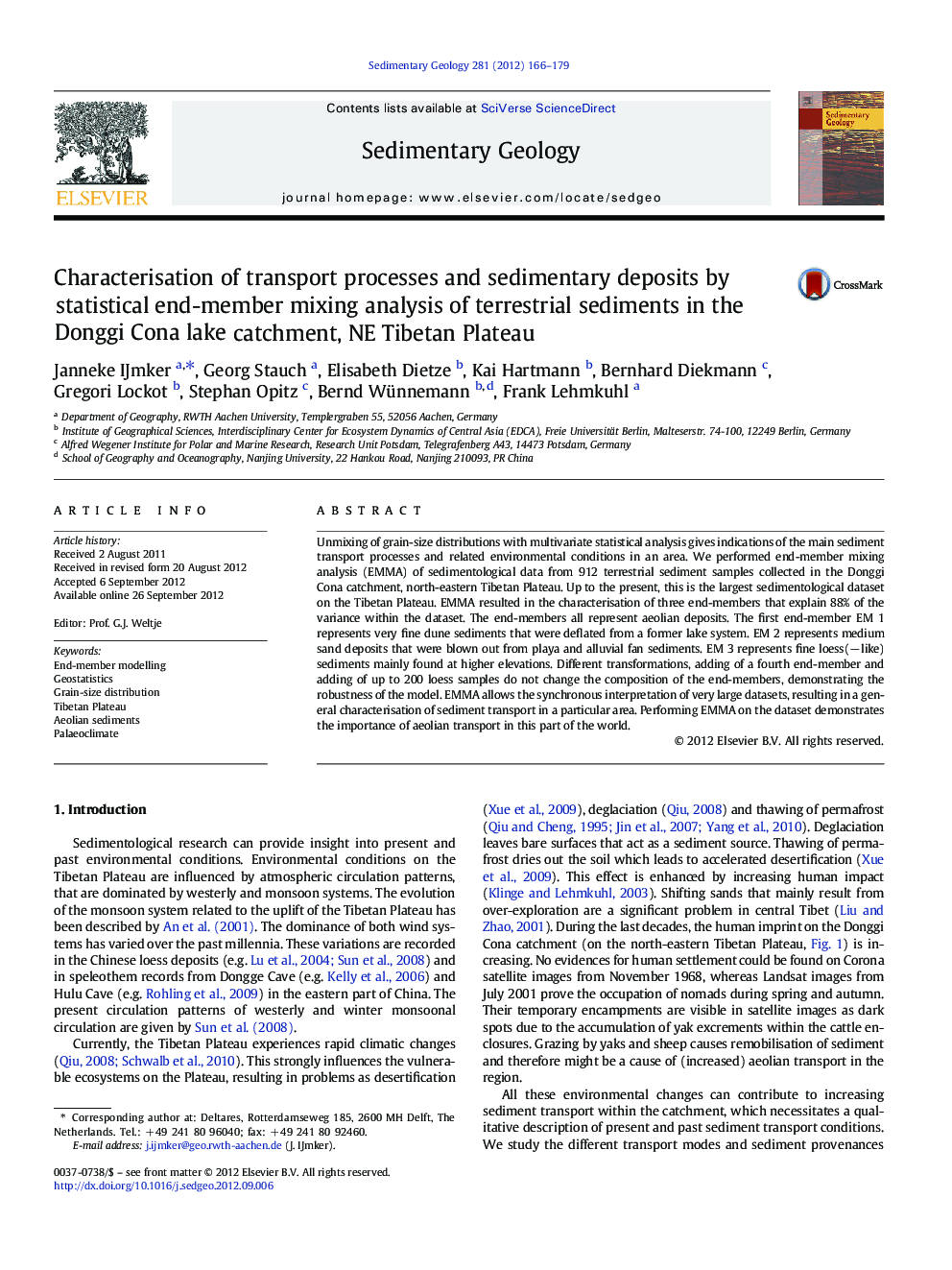| Article ID | Journal | Published Year | Pages | File Type |
|---|---|---|---|---|
| 4689685 | Sedimentary Geology | 2012 | 14 Pages |
Unmixing of grain-size distributions with multivariate statistical analysis gives indications of the main sediment transport processes and related environmental conditions in an area. We performed end-member mixing analysis (EMMA) of sedimentological data from 912 terrestrial sediment samples collected in the Donggi Cona catchment, north-eastern Tibetan Plateau. Up to the present, this is the largest sedimentological dataset on the Tibetan Plateau. EMMA resulted in the characterisation of three end-members that explain 88% of the variance within the dataset. The end-members all represent aeolian deposits. The first end-member EM 1 represents very fine dune sediments that were deflated from a former lake system. EM 2 represents medium sand deposits that were blown out from playa and alluvial fan sediments. EM 3 represents fine loess(− like) sediments mainly found at higher elevations. Different transformations, adding of a fourth end-member and adding of up to 200 loess samples do not change the composition of the end-members, demonstrating the robustness of the model. EMMA allows the synchronous interpretation of very large datasets, resulting in a general characterisation of sediment transport in a particular area. Performing EMMA on the dataset demonstrates the importance of aeolian transport in this part of the world.
► End-member mixing analysis of grain-size data from 912 Tibet Plateau samples. ► Unmixing of grain-size distributions allows parameterization of large datasets. ► EMMA resulted in 3 aeolian end-members: fine sand, medium sand and loess sediments. ► Sediment characteristics relate to source material and indicate transport pathways. ► EMMA reveals the distribution of dominant transport process regions.
